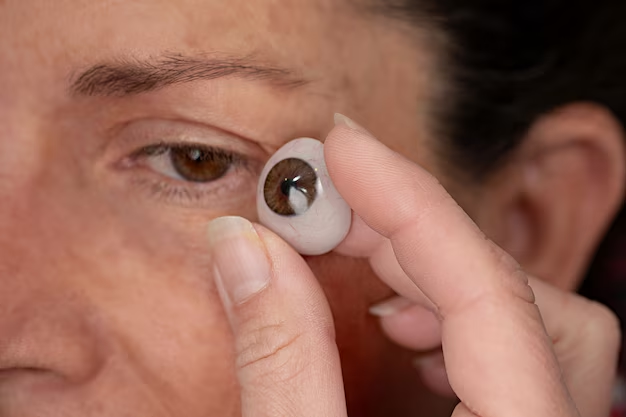Unveiling the Symptoms of Cataracts and Glaucoma: Knowing the Signs Can Save Your Sight 🌟
Vision is one of our most vital senses, guiding us through daily life, from reading a loved one's expression to navigating city streets. Yet, as we age, our eyes become susceptible to two common conditions: cataracts and glaucoma. Both can significantly impair vision, but recognizing the early symptoms can make all the difference in maintaining a healthy eyesight. Here's a deep dive into identifying these conditions, understanding the risks, and the importance of early detection. 🕵️♂️
Understanding Cataracts: The Clouding of Clarity ☁️
Cataracts develop when proteins in the lens of the eye clump together, creating a cloudy area. As cataracts grow, they can obstruct light entering the eye, leading to vision problems.
Typical Symptoms of Cataracts 👀
- Blurry Vision: Initially, your vision might seem foggy or blurred, akin to looking through a frosted window.
- Reduced Night Vision: Difficulty seeing at night or in low-light settings often becomes more pronounced.
- Glare Sensitivity: Bright lights, even during the day, may seem overly intense or glaring.
- Halos Around Lights: Rings of light, akin to halos, may appear around headlights or street lamps.
- Fading Colors: Colors appear less vibrant and may look faded or yellow-tinged.
- Frequent Prescription Changes: You might notice frequent changes in the prescription of your glasses or contact lenses.
Who is at Risk? 🤔
While cataracts are considered a part of the aging process, several factors can increase your risk:
- Age: Most common in people over 60.
- Diabetes: This condition can accelerate cataract development.
- Sun Exposure: Prolonged UV exposure may increase risk.
- Smoking and Alcohol Use: These lifestyle habits contribute significantly to cataract formation.
- Family History: Genetic factors can predispose you to cataracts.
Glaucoma: The Silent Thief of Sight 🕶️
Unlike cataracts, glaucoma is often not noticeable in its early stages because it usually involves increased eye pressure, damaging the optic nerve. Early detection is crucial, as damage is typically irreversible.
Symptoms of Glaucoma: Stay Alert 🚨
- Gradual Vision Loss: Typically begins with peripheral or side vision, progressing to tunnel vision.
- Eye Pain and Redness: Can occur suddenly in one type of glaucoma, requiring immediate attention.
- Headaches: Occasional severe headaches may accompany eye pain.
- Halos Around Lights: Similar to cataracts, halos can appear around bright lights.
- Nausea and Vomiting: Less common, but can occur if intraocular pressure spikes suddenly.
Recognizing the Risk Factors for Glaucoma 📉
Your likelihood of developing glaucoma may increase if you:
- Are Over 60: Age is a significant risk factor.
- Family History: A family history of glaucoma can double your chances.
- Ethnicity: Certain ethnic groups, such as African Americans and Hispanics, are more prone to glaucoma.
- Existing Eye Conditions: Conditions like severe nearsightedness increase risk.
- Use Certain Medications: Steroid use can raise intraocular pressure.
Bridging the Connection: Can Cataracts and Glaucoma Coexist? 🤝
Yes, it's possible to have both conditions simultaneously. The presence of one doesn't negate the risk of the other. Regular eye exams, especially for those over the age of 40, can help detect early signs of both. Eye specialists may adjust treatment plans to manage both conditions effectively without exacerbating the other.
How Are Cataracts and Glaucoma Diagnosed? 🔍
- Eye Exams: Routine comprehensive eye examinations can detect signs of both cataracts and glaucoma.
- Visual Acuity Test: Checks how clearly you see at various distances.
- Tonometry Test: Measures eye pressure, aiding in glaucoma detection.
- Dilated Eye Exam: Allows the doctor to examine the retina and optic nerve for damage.
- Pachymetry: Measures corneal thickness, which can affect pressure readings in glaucoma.
Taking Action: Monitoring and Managing Eye Health 💪
Since symptoms may develop slowly and painlessly, regular ophthalmologist visits are crucial for senior adults and those at risk. Early diagnosis can lead to better outcomes and less vision loss.
Summary of Key Takeaways 📝
- Regular Eye Check-Ups Matter: Ensure consistent visits to an eye care professional, particularly if you're at risk.
- Be Vigilant About Symptoms: Familiarize yourself with the signs and seek prompt evaluation if they appear.
- Protect Your Eyes: Use sunglasses with UV protection and manage chronic health conditions that can impact vision.
- Stay Informed: Knowledge of family history can help assess personal risk.
- Lifestyle Adjustments: A healthy diet, regular exercise, and avoiding tobacco and excessive alcohol can promote eye health.
Quick-Reference Table: Symptoms of Cataracts vs. Glaucoma 📊
| Symptom | Cataracts | Glaucoma |
|---|---|---|
| Vision Type | Blurry, cloudy vision | Peripheral vision loss |
| Light Sensitivity | Glare and halos | Halos and eye pain |
| Color Perception | Colors fade, become yellowish | Not directly affected |
| Other Symptoms | Frequent prescription changes | Headaches, nausea in acute cases |
Understanding that cataracts and glaucoma each present unique challenges and symptoms empowers you to take proactive steps for your eye health. By being informed and attentive, you can navigate these potential threats with confidence and clarity. Remember, early detection is your best defense for preserving vision and quality of life. 🌈
